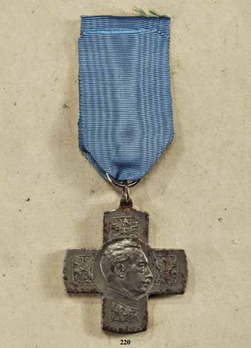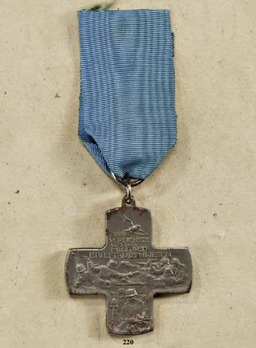Cross for Military Pigeon Services
CATEGORY: Version
SKU: 02.GEM.0102.101.01.000
Estimated market value:


Estimated market value:
A Greek cross constructed of iron, the obverse bears a circular medallion with the portrait of Wilhelm II facing right in profile, the arms bears oak leaves with a plain border, the upper arm of the reverse bears a pigeon flying above the inscription FÜR VERDIENSTE UM DAS MILITAER BRIEFTAUBENWESEN, the left and right arms show a battle scene featuring five German soldiers engaged in trench warfare, two throwing grenades,
and three firing a machine gun, the lower arm bears a German soldier attaching report to the foot of a pigeon from a container, with loop for suspension, on a blue ribbon.
The Cross was initially designed by the Prussian War Ministry and approved by King Wilhelm II.
It was awarded to members of the German Association for Military Carrier Pigeon Breeders who had rendered exceptional services by ensuring that pigeons were available for use on the front line during wartime. In 1914, the German Association for Military Carrier Pigeon Breeders had approximately 19,000 members and approximately 750,000 pigeons. At the beginning of World War I, the use of pigeons did not have special importance in the German military. However, with the use of trench warfare, the importance of the pigeons increased as they could deliver reports over short distances very quickly. The Supreme Command then ordered the large scale construction of mobile pigeon stations. Prior to 1916, the pigeons were under control of the engineer troops, but control transferred to the telephone and telegraph sector of military intelligence. The need for trained pigeons increased and the military turned to civilian breeders to provide birds for duty.
The medal was designed by Professor Paul Sturm, who was a sculptor and medalist for the Prussian Royal Mint. They were minted in iron at the Prussian Royal Mint and a total of 549 medals were manufactured. 469 of the medals were awarded.

Comments
Sign in to comment and reply.


Scroll Top